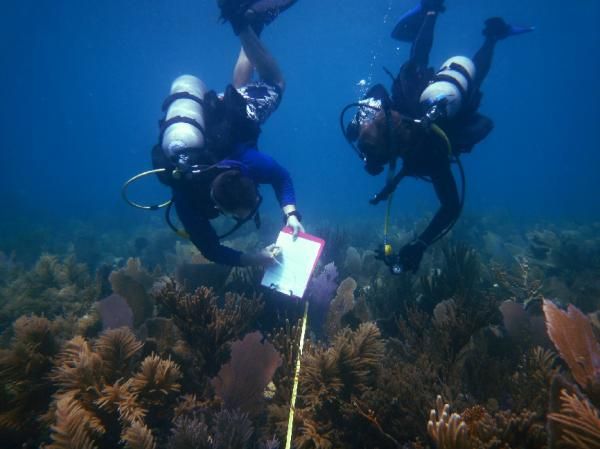
Surprisingly, Hurricanes Offer Relief to Damaged Corals

Hurricane Rina marked the sixth hurricane of an especially active Atlantic hurricane season, which saw Hurricane Irene cause devastating flooding in the Mid-Atlantic and New England states.
But for one colorful ocean dweller, new research is showing how hurricanes can be good news — as long as they pass by at a safe distance.
The swirling storms can bring up cooler waters from the depths of the sea that bring relief to coral reefs under assault from warming waters and other threats.
In hot water
Corals live in waters that are nearly too hot for their own good, said coral reef ecologist Derek Manzello, who studies these reef-building organisms at the National Oceanic and Atmospheric Administration's (NOAA) Atlantic Oceanographic and Meteorological Laboratory in Miami. A monthlong temperature spike of as little as 1.8 to 3.6 degrees Fahrenheit (1 - 2 degrees Celsius) can bleach coral reefs.
Coral polyps, the tiny organisms that make up a coral reef, contain photosynthetic algae called zooxanthellae, which provide the coral with food (and also with color). Coral bleaching occurs when zooxanthellae leave the coral due to increased water temperature or other stress factors, and so the coral structure appears white. Without means to feed themselves, the bleached coral have trouble reproducing and growing, and if the bleaching event lasts long enough, they can die. But when the stress is removed, the corals can recover in about a month, Manzello said during a tour of his lab.
As the oceans continue to heat up due to climate change, coral experts say more severe and more frequent coral bleaching is expected.
Sign up for the Live Science daily newsletter now
Get the world’s most fascinating discoveries delivered straight to your inbox.
"Recent, global mass-mortalities of reef corals due to record warm sea temperatures have led researchers to consider global warming as one of the most significant threats to the persistence of coral reef ecosystems," Manzello wrote in one of his recent studies of bleached corals.
How hurricanes help
But hurricanes seem to provide some relief from the warming water by cooling the corals. Manzello and his research team found that winds from all tropical cyclones (a term that encompasses tropical storms and hurricanes) that passed within 435 miles(700 kilometers) of the Florida Reef Tract east of the Florida Keys in 2005 lowered the surrounding sea surface temperatures.
In 2005, reefs in the Caribbean suffered one of the worst recorded bleaching events. The reefs in the Florida tract, however, recovered faster than nearby reefs, which Manzello's study attributed to hurricane-induced cooling.
"The cooling effect of hurricanes can have mitigating effects," Manzello said.
When a hurricane passes by, it draws up cool water from deep in the ocean, a process called upwelling. A hurricane can wipe out anything within 50 miles (90 km) from the storm's eye. But Manzello found that when a tropical cyclone got as close as 250 miles (400 km) of the Florida Reef Tract, sea temperatures dropped by up to 5.8 F (3.2 C).
Another surprising recent study showed another way that hurricanes can aid corals' recovery. When hurricanes cluster together, coming one right after the other (a common occurrence in the Caribbean) they are actually less damaging for coral reef health over the long term than random hurricane events. That's because the first hurricane to hit a reef always causes heavy damage, but the storms that follow in quick succession don't add much additional damage as most of the fragile corals were removed by the first storm.
You can follow OurAmazingPlanet staff writer Brett Israel on Twitter: @btisrael. Follow OurAmazingPlanet for the latest in Earth science and exploration news on Twitter @OAPlanet and on Facebook.












